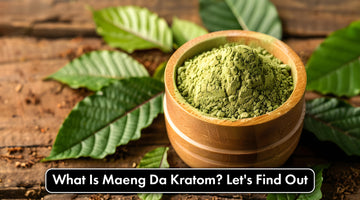
In this comprehensive blog, we will look at the world of Kratom, exploring its historical uses, potential benefits, side effects, addictive properties, legal status, and address frequently asked questions.
What Is Kratom?
Kratom, scientifically known as Mitragyna speciosa, is a tropical evergreen tree indigenous to regions like Thailand, Malaysia, Indonesia, and Papua New Guinea. The leaves of the Kratom tree contain psychoactive compounds, including mitragynine and 7-hydroxymitragynine, which interact with opioid receptors in the brain, producing various effects. Kratom is available in various forms, including leaves, powder, capsules, and extracts, making it versatile for consumption.
Historical Uses and Cultural Significance of Kratom:
The historical uses of Kratom trace back centuries in Southeast Asian cultures, where it was traditionally used for its stimulant and analgesic properties. Laborers and farmers would chew Kratom leaves to increase energy and combat fatigue during long working hours. Additionally, Kratom was employed in religious ceremonies and social gatherings, playing a significant role in the cultural fabric of the region.
Potential Uses of Kratom Consumption:
- Pain Relief: Kratom's analgesic properties have made it a popular choice for those seeking natural pain relief. Some users claim that Kratom can be effective in alleviating chronic pain conditions, such as arthritis and migraines.
- Mood Enhancement: Kratom is believed to have mood-enhancing effects, acting as a mild stimulant. Users have reported experiencing increased sociability, improved mood, and a sense of well-being after consuming Kratom.
- Stress and Anxiety Management: Some individuals turn to Kratom as a natural remedy for managing stress and anxiety. The calming effects are thought to result from the interaction with receptors in the brain.
- Opioid Withdrawal: There is anecdotal evidence suggesting that Kratom may assist in managing opioid withdrawal symptoms. Some individuals have used Kratom as a transitional aid to ease the discomfort during the withdrawal process.
Potential Side Effects of Kratom:
While Kratom has gained popularity for its potential benefits, it is essential to be aware of potential side effects:
- Nausea and Vomiting: Some users may experience nausea and vomiting, especially when consuming high doses of Kratom.
- Dizziness and Lightheadedness: Kratom can cause dizziness and lightheadedness, particularly in those new to its consumption or at higher doses.
- Dependency and Addiction: There are concerns about the potential for Kratom to be addictive. Prolonged and frequent use may lead to dependence, and sudden cessation can result in withdrawal symptoms.
- Digestive Issues: Kratom may cause digestive issues such as constipation. It is crucial to stay hydrated and maintain a balanced diet while using Kratom.
Is Kratom Addictive?
The question of whether Kratom is addictive is a complex one. While some users report developing a dependence on Kratom, the extent of its addictive potential is not well understood. Regular, long-term use may lead to the development of tolerance, where higher doses are needed to achieve the same effects. Abrupt cessation of Kratom after prolonged use may result in withdrawal symptoms, further raising concerns about its addictive nature.
Is Kratom Legal?
The legal status of Kratom varies globally and within different regions of individual countries. In some places, Kratom is entirely legal, while in others, it is classified as a controlled substance. The legality of Kratom is subject to change, and users should stay informed about the regulations in their respective locations.
Conclusion:
Kratom's journey from traditional use in Southeast Asia to global popularity has sparked both enthusiasm and concern. As with any herbal supplement, it is essential for users to approach Kratom with caution, understanding its potential benefits and risks. While some people find relief from chronic pain, stress, and anxiety through Kratom consumption, others may experience adverse effects. Moreover, the legal status of Kratom adds an additional layer of complexity.
As research on Kratom continues, it is essential for users to stay informed, practice responsible consumption, and be aware of the ever-evolving legal landscape surrounding this intriguing botanical substance.
FAQs:
How Should I Take Kratom?
Kratom is consumed in various ways, and the choice of method often depends on personal preference. Common methods include chewing the leaves, brewing them as a tea, or ingesting Kratom powder. Capsules and extracts are also popular options. It is crucial to start with a low dose and gradually adjust to find the optimal amount for individual needs.
What Are the Different Strains of Kratom?
Kratom comes in various strains, each with unique properties and effects. Some popular strains include:
- Red Vein Kratom: Known for its calming and pain-relieving effects, red vein Kratom is often used for relaxation and stress relief.
- Green Vein Kratom: This strain is considered a balance between red and white vein Kratom, providing both energy and mild pain relief.
- White Vein Kratom: White vein Kratom is known for its stimulating effects, making it a popular choice for increased focus and energy.
Is Kratom Legal?
The legality of Kratom is a common concern for users. It is crucial to research and understand the specific regulations in your region, as the legal status of Kratom can vary widely. While it is legal in some countries, others have imposed restrictions or outright bans on its sale and consumption.




